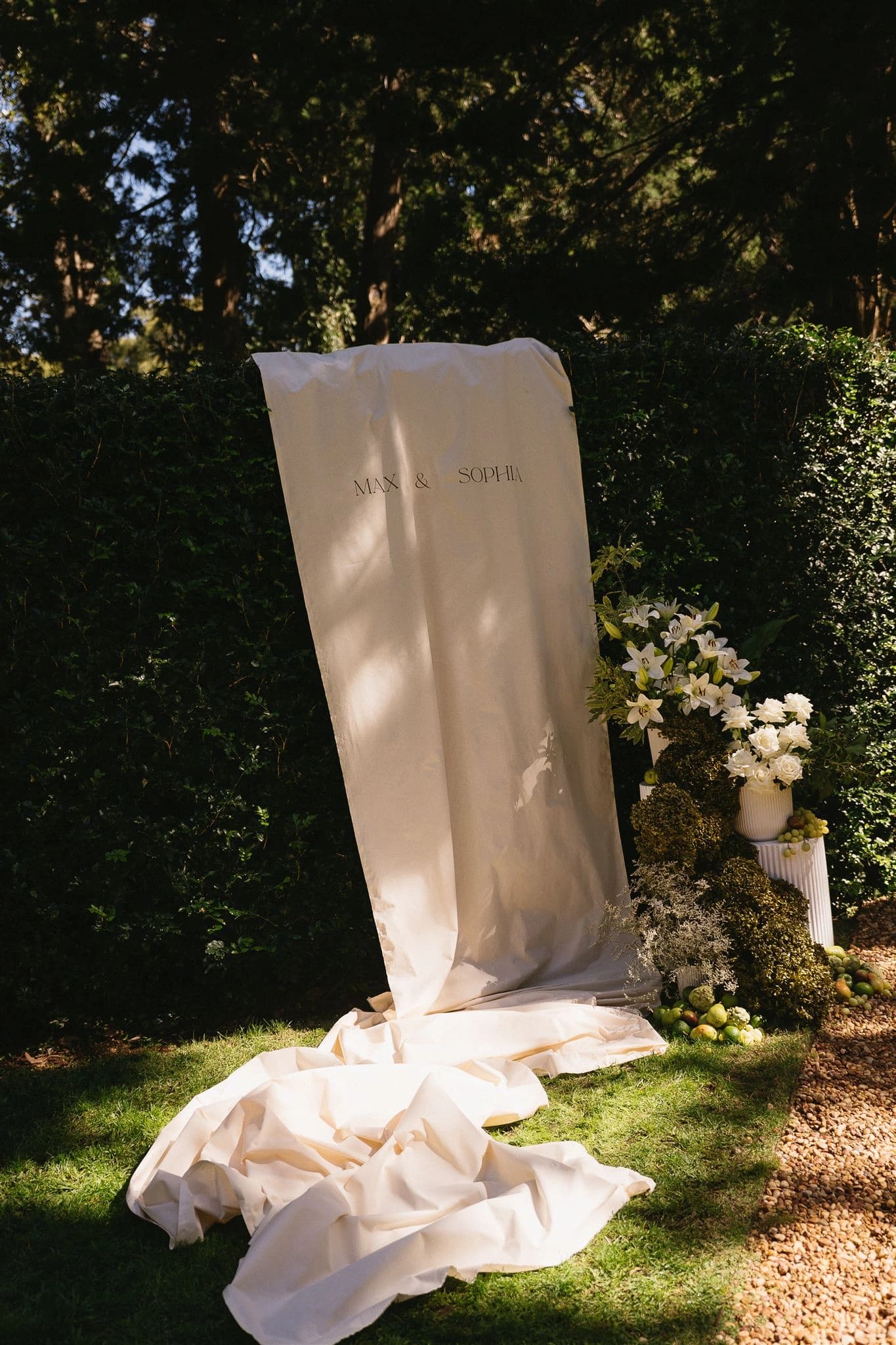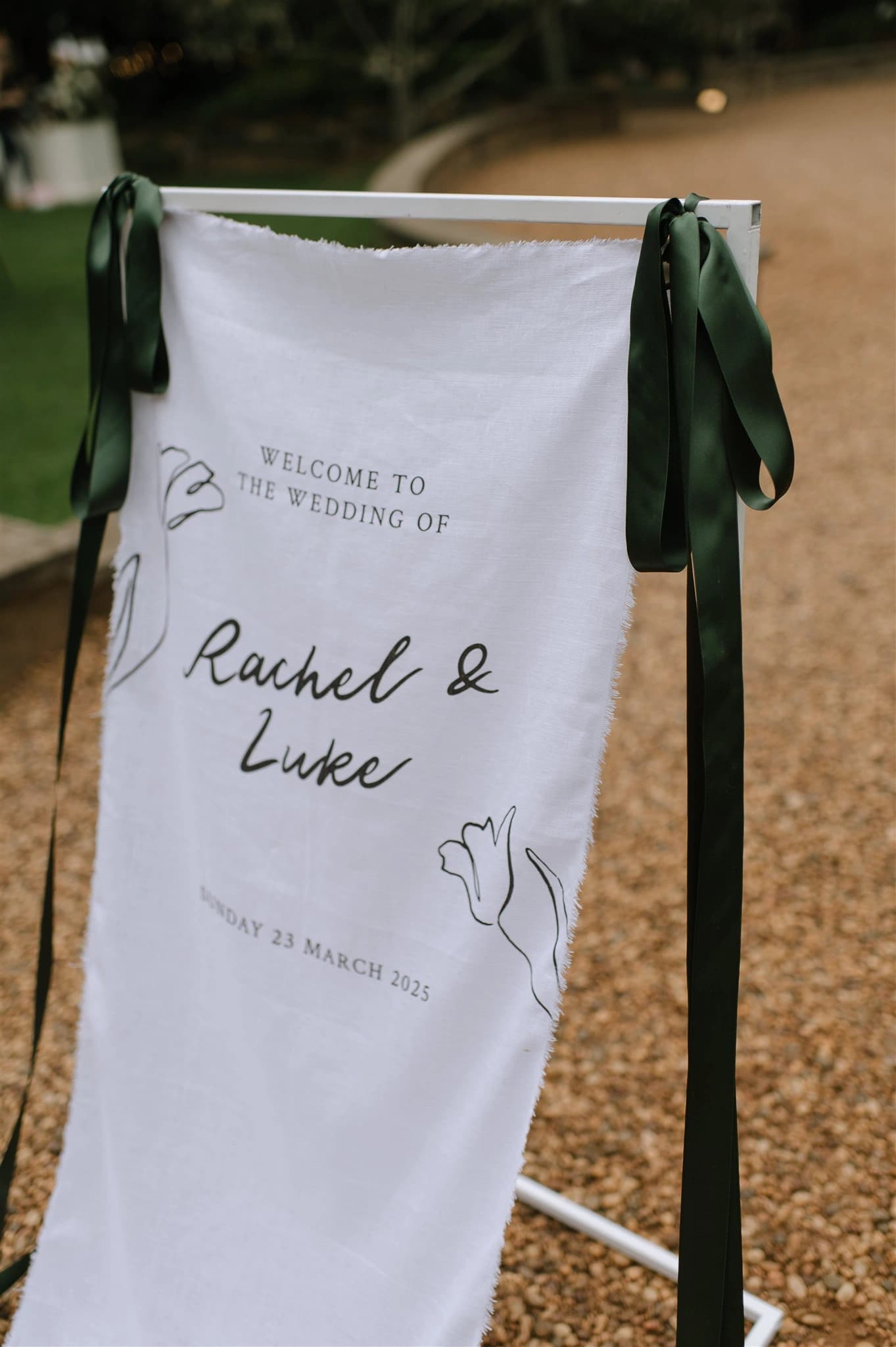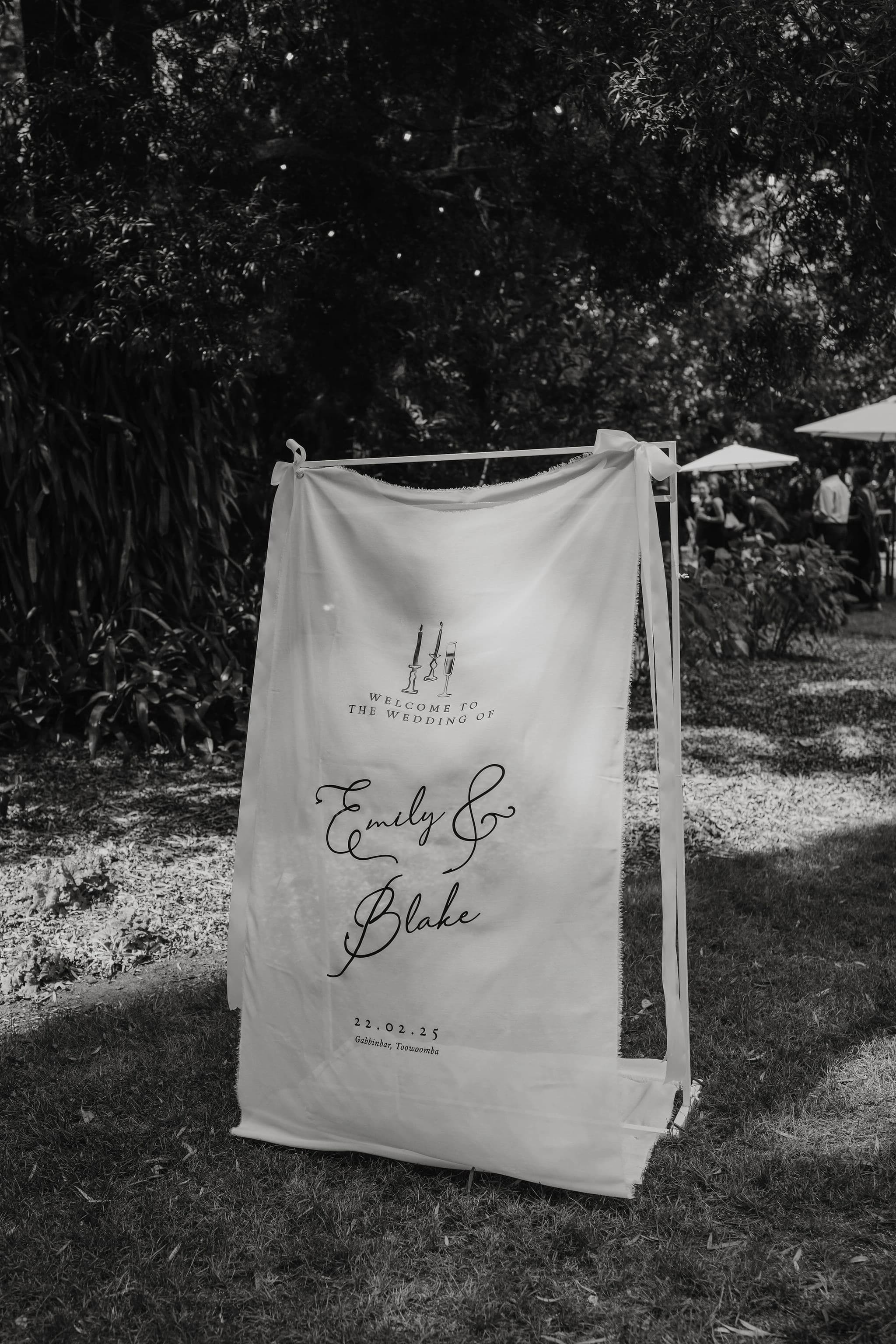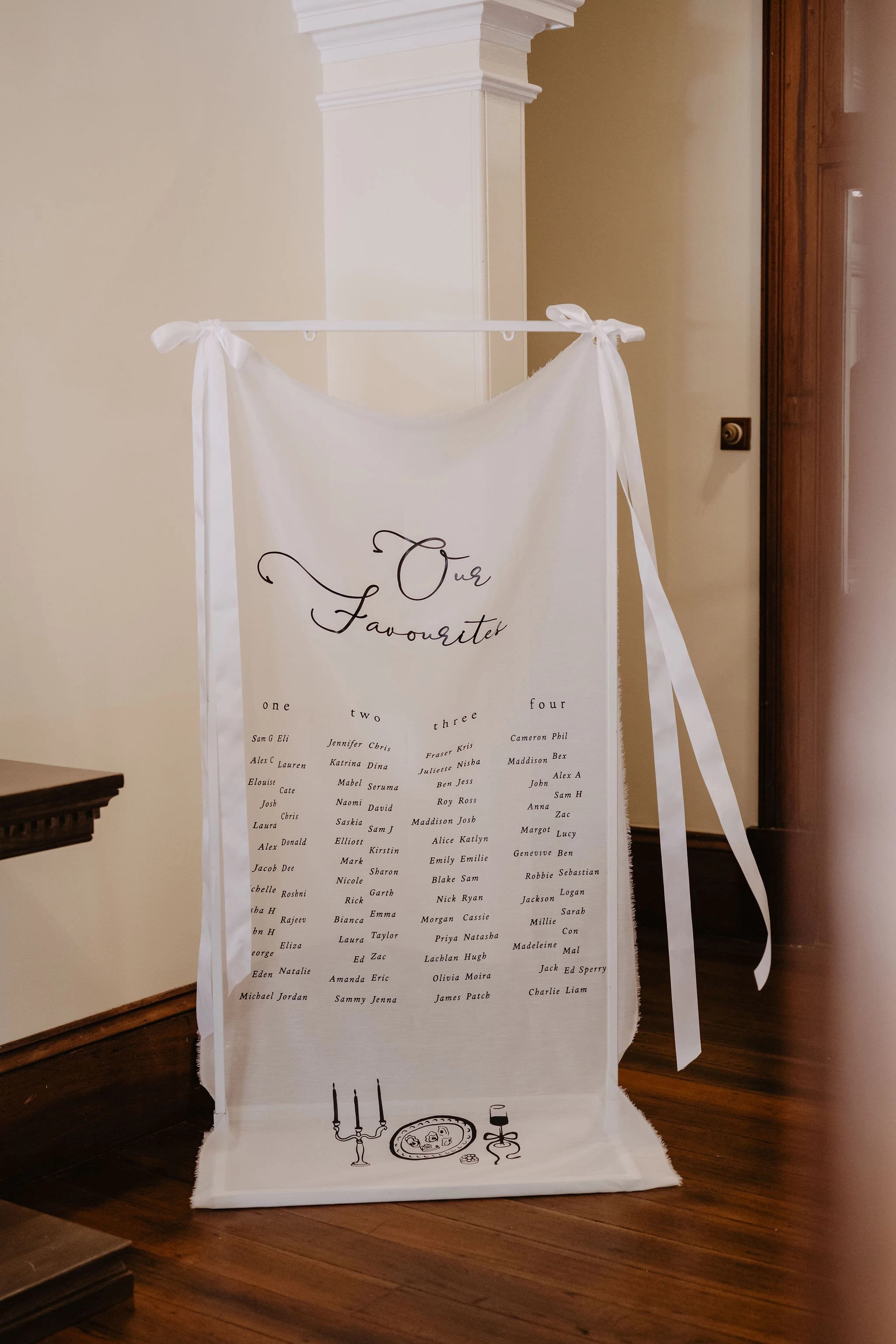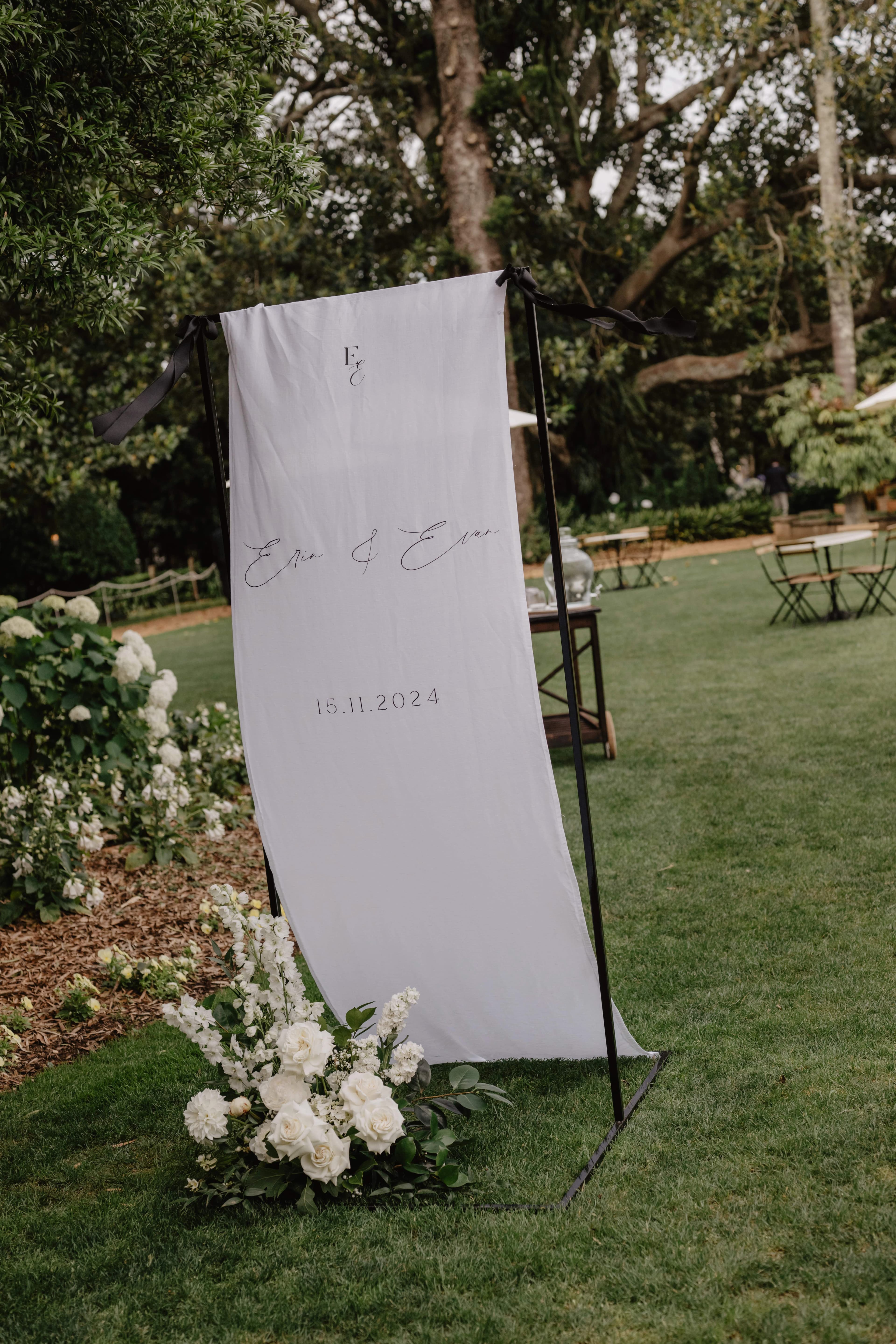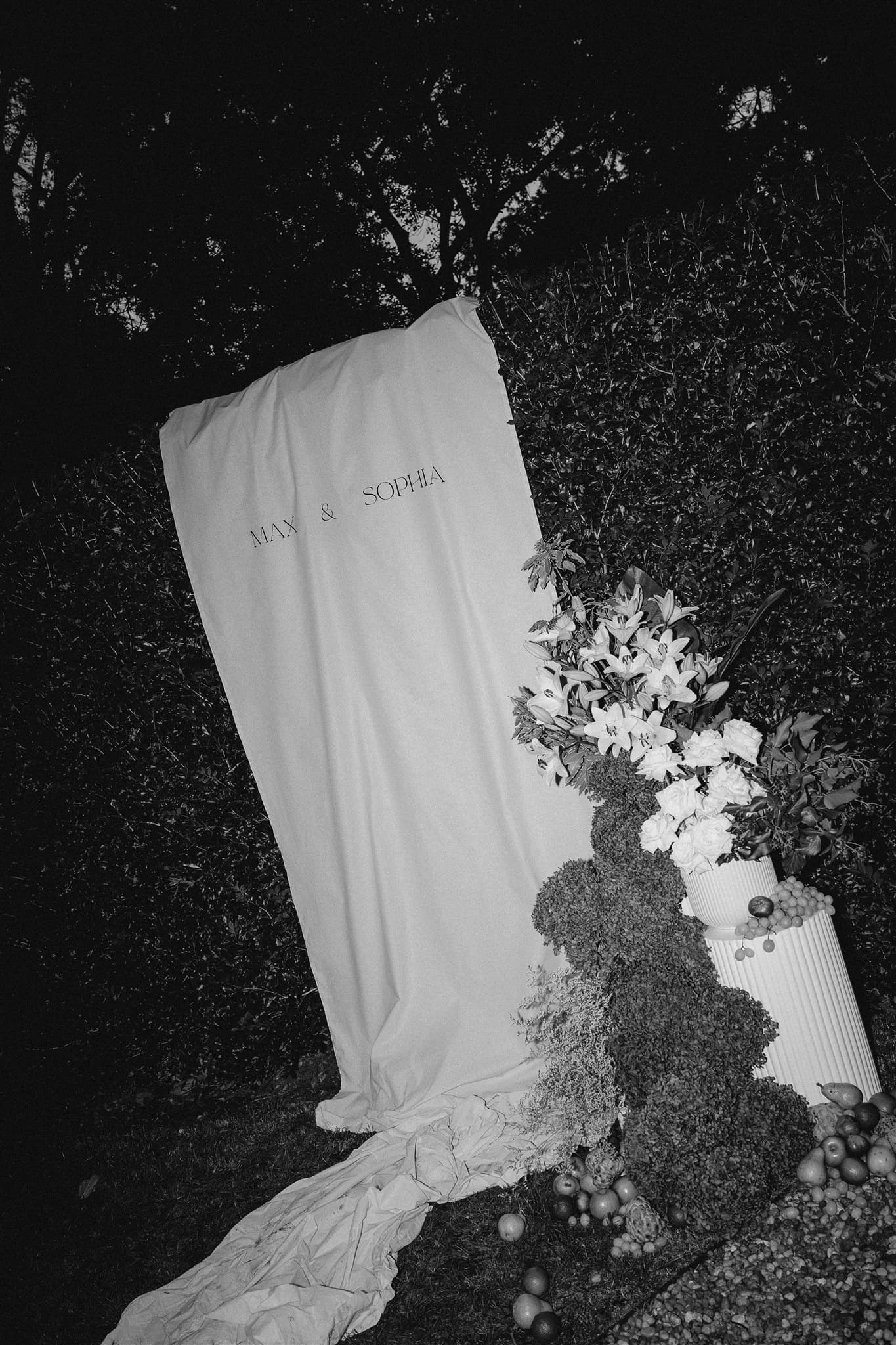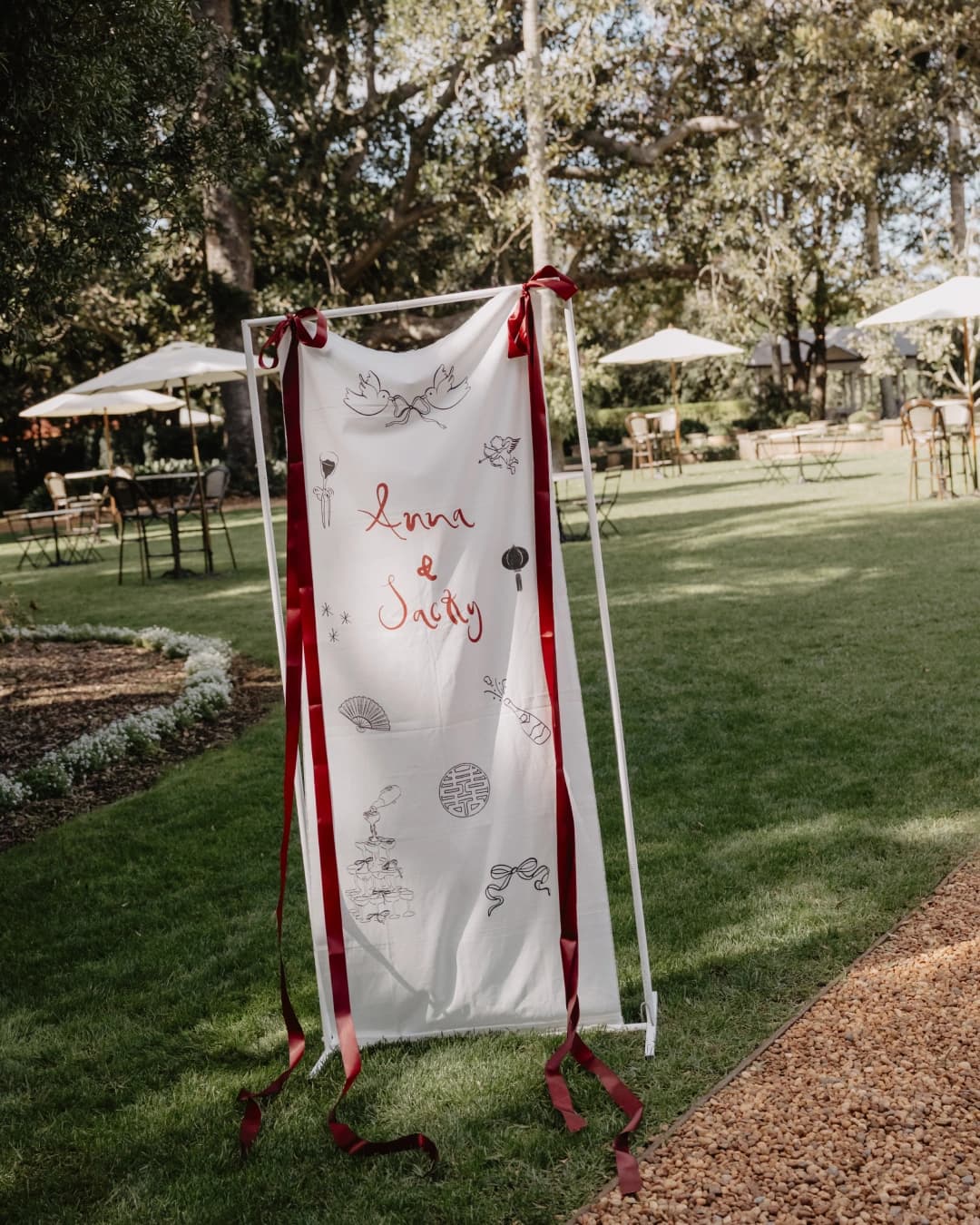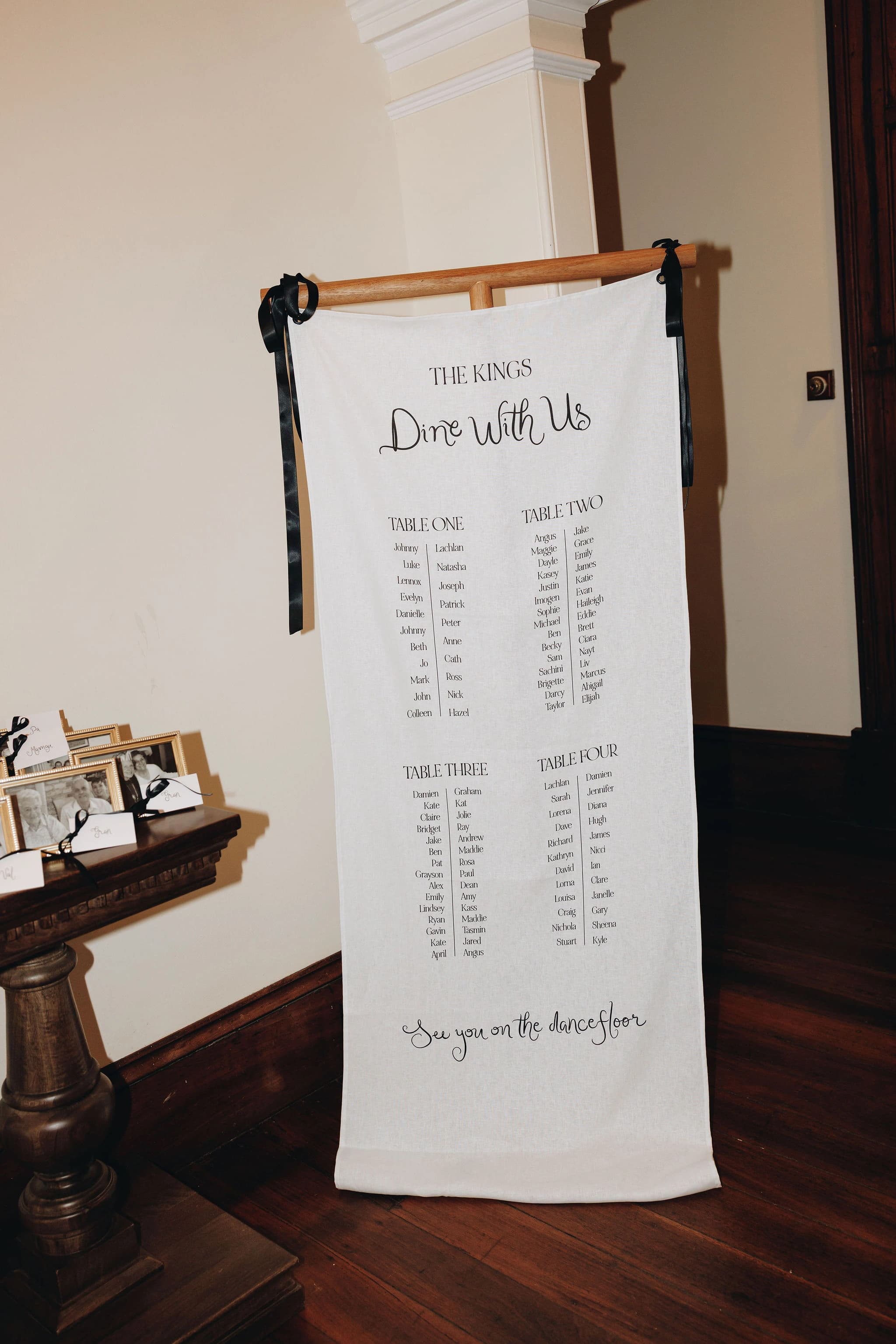In weddings across Australia this year, one small detail keeps catching our eye: fabric signage.
They move softly in the breeze, catch the light, and seem to welcome you before a single word is read. Sometimes it’s linen with frayed edges. Sometimes silk with a faint sheen. Either way, it’s a moment of calm — a way to say you’re in the right place without a single arrow or bold print.
We’ve seen them at ceremony lawns, along garden paths, and by the entry to candlelit receptions. They add texture and rhythm to the day, but also something more personal — a tone. A signal that this celebration will unfold gently, with intention.
Here’s what’s defining the look right now:
